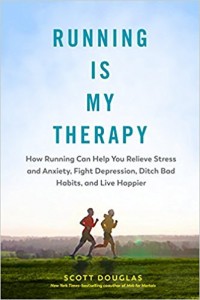Archive for the 'Uncategorized' Category
Book(s) Report, Part 1
For no compelling reason, I maintain a list of completed books every year. I give each a one-word review of no, meh, or yes, the criterion being if I’d recommend it to a friend with similarish tastes. NO and YES means emphatically so. Of the books I read in the first 49 weeks of 2018, here are the six that got a YES:
- The True Deceiver, by Tove Jansson
- The Disappearance of Adele Bedeau, by Graeme Macrae Burnet
- Bullshit Jobs, by David Graeber
- The Overstory, by Richard Powers
- The Unchangeable Spots of Leopards, by Kristopher Jansman
- The Echo Maker, by Richard Powers
A note on Richard Powers: I hadn’t heard of him until this year and the release of The Overstory. It was one of the most engrossing reading experiences of my life. I was psyched to see he has a huge back catalog. So I soon after read The Echo Maker, and was similarly enthralled.
Since then I’ve started two of his other novels, and stopped. Not because they’re bad, but because reading them in such close succession was simply too much, akin to going to a lavish, hours-long dinner four out of five nights. Sometimes you just want a big salad while watching a movie. I reshelved the two I started for when I’m hungry for something overwhelming.
Comments are off for this postRunning Is My Therapy Published!
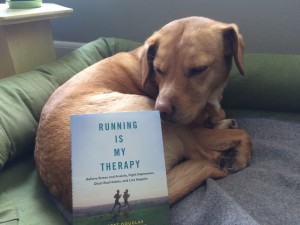 Tuesday, April 17 was a landmark day for books written by William and Mary religion majors of the 1980s—it was publication day for James Comey and me. As my mother-in-law said, read my book to feel better after reading his.
Tuesday, April 17 was a landmark day for books written by William and Mary religion majors of the 1980s—it was publication day for James Comey and me. As my mother-in-law said, read my book to feel better after reading his.
Here’s the book’s Amazon page.
Write me if you’d like to have me as a podcast guest or otherwise talk about the book’s key topic of using running to manage mental health.
Comments are off for this postSlate Article on Prescribing Exercise for Depression
One of the most interesting things I learned while writing Running Is My Therapy: In some countries, official medical guidelines count exercise as a first-line treatment for depression. It’s considered on a par with medication and therapy for initial treatment options. That, of course, is not the case in the United States. Why is the U.S. system behind others on this?
I was able to explore this topic in more depth for this Slate article.
1 commentWords, Words, Words
1. In April The Experiment will publish Running is My Therapy. It’s the book I’ve wanted to write for years about the intersection of running and mental health, detailed via reported science, first-person narrative, interviews with experts and other runners’ experiences. (If that mix and the topic sound familiar, perhaps you remember my Runner’s World story on the subject that was published in November.) The book is available for pre-order on Amazon.
If you’re in a position to review the book, are interested in having me on your podcast, etc., write me and I’ll see that you get an advance copy.
2. I currently have the pleasure of spending lots of time with Meb Keflezighi as we work on a book about his marathon career. (Alas, that time is spent on the phone and laptop, not in person, although with the way the Maine winter is shaping up, I might have to show up at his San Diego home.) Meb retired from elite competition after November’s New York City Marathon, his 26th go at the distance. Our book, 26 Marathons, will tell the story of and lessons from each of Meb’s career marathons. I’ve learned a lot so far from our discussions; some of it even has to do with the book! 26 Marathons is scheduled to be published by Rodale in November.
3. Once Meb and I turn in our manuscript, I’ll keep collaborating with Olympic marathoners, as Pete Pfitzinger and I will start working in earnest this spring on the third edition of Advanced Marathoning. It will be published in 2019.
4. In the spring I’ll also start working on a book called What Happens When You Run, to be published by Velo Press. More on that later.
5. Finally, books written by others: I finished 35 books this year. (I don’t count books I read for work.) Continuing a development of middle age I still find interesting, given my previous penchant for non-fiction, 28 were fiction. My reading for pleasure takes place almost entirely after dinner. At that time, I usually want a well-constructed fictional world rather than insights on how the real world works.
That said, one of the three books that most stood out for the year was an essay collection. When I record having finished a book, I give it a one-word review of yes, no or meh, with the review being what I would say if someone with similar taste were to ask if I recommend it. Some get an all-caps YES or NO for emphasis. My three all-caps YES books for the year, starting with that essay collection, were:
- The Other Serious, by Christy Wampole
- Blind Sight, by Meg Howrey
- The Loney, by Andrew Michael Hurley
Books Three-Parter
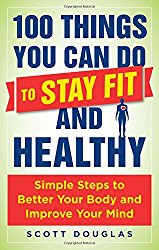 1. This book is now out. Of the eight books with my name on the cover, it’s the first that’s not about running. So that counts for something.
1. This book is now out. Of the eight books with my name on the cover, it’s the first that’s not about running. So that counts for something.
2. This month I’ll start working on a book about running and depression. (Write what you know, etc.) It’s slated for publication by The Experiment next year. This makes me happy, but hopefully not so much I lose touch with half of the book’s subject matter.
3. As for books by others, of the 46 I finished in 2016, there are four that I have been or will be urging on people with similar tastes:
The Invoice, by Jonas Karlsson.
Lazarus is Dead, by Richard Beard.
The Apostle Killer, by Richard Beard. (Called Acts of the Assassins when released.)
The Trespasser, by Tana French.
Meb for Mortals Out April 7
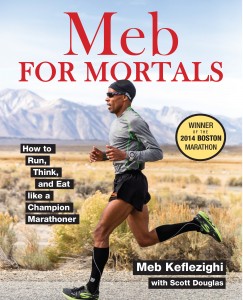 For a variety of reasons, this is the book I’ve written or co-written that I’m most proud of.
For a variety of reasons, this is the book I’ve written or co-written that I’m most proud of.
I am fortunate to have now co-written books with three U.S. Olympic marathoners. The most satisfying aspect of each project has been liking and respecting my co-authors even more after working together.
Comments are off for this postBernd Heinrich Profile
Here’s my story about Why We Run author Bernd Heinrich, and the intersection of his approach to science and his running.
Comments are off for this postMusic-Related Minimalism Book Giveaway
Here’s the deal: You recommend a band I wind up liking more than anyone else’s recommendation, and I’ll send you a copy of my minimalism book.
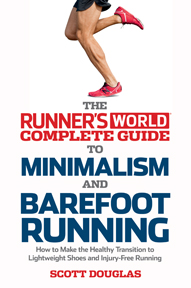 Below are the 25 band or musician names at the top of the most-played list in my iTunes library. On the basis of those, recommend someone else for me to listen to.
Below are the 25 band or musician names at the top of the most-played list in my iTunes library. On the basis of those, recommend someone else for me to listen to.
If I’m already familiar with the band or musician, I’ll let you know, and you can make another recommendation.
I’ll take recommendations through Sunday, June 16, and then decide whose recommendation I like the best, and send that person the book.
Send your recommendations here or leave them in comments below. Here are the musicians to use as the basis for your recommendation:
Vincent Herring
The Feelies
The Liminanas
Whirr
Yuck
Pia Fraus
Wild Nothing
Bears
Eric Reed
Stereolab
The High Violets
Matt Pond PA
Swell
Sparrow
American Analog Set
Black Tambourine
Lush
Metropolitan
God
James Moody
Nord Express
Band of Susans
Luna
Jim Rotondi
Real Estate
Peroneal Surgery #5: How I Got in This Mess
Here’s the back story to why I wound up having peroneal tendon repair surgery.
My right calf, Achilles and ankle have always been more rigid than my left. That became more so after a nasty bout of Achilles tendinitis in 1992. As I’ve noted before, I’ve also long had extra “stuff” below the lateral right ankle. And I sprained the ankle a bunch of times as a kid. So I was a good candidate to overstress the peroneal tendons, in part by placing extra load on them because of rigidity in the foot and ankle leading to not rolling through the running gait as would be ideal.
The first time my foot became troublesome in what would become familiar ways was the summer of 2010. The discomfort and dysfunction was not around the ankle, but along the lateral bottom of the foot, near the cuboid bone. I was worried I had a stress fracture. I think I did a couple bouts of a couple days off, and definitely had reduced mileage. It didn’t go away, but it didn’t continue to deteriorate, and I went about my business. Over the next year and a half I would occasionally have flare-ups, and I’d be concerned I had a stress fracture in my foot. (It’s funny to think now that my reaction was, “Not a stress fracture of the foot! I might have to take off like four weeks!” As I write this, I haven’t run in close to four months.)
During that year and a half, I could generally trace a relationship between more time working (read: sitting with bad posture) and my foot acting up. The more my hips felt out of alignment for days at a time, the more likely it was my foot would start complaining. And during this time the wear on my running shoes, which had always been heavier on my left shoe, became much more that way. (Yes, more wear on the “good” foot, but the one with less wear is the one that was going kaput. There are some recent studies about asymmetrical running gaits and lack of relationship to injury site.)
One morning in February 2012 I stepped out of bed and found I could barely put weight on my right foot. The area around the lateral ankle was acutely tender. I had to walk with my right foot turned way out to get going that morning. I remember being in a good mood while cooking the night before and briefly–very briefly–doing a little dancing to “Gardening at Night” by REM.
Of course I ran that afternoon, but something was different. This wasn’t so much the cuboid-area foot pain of before, although I think that was also present. This was tenderness, tightness and dysfunction in soft tissue around the lateral ankle. Running felt different.
I muleheadedly plugged away for the next few weeks. I remember doing an easy 90 minutes on St. Patrick’s Day and spending the entire run dreading every time my right foot was going to hit the ground. I took some time off, got some massages from my friend Julia Kirtland, and experimented with her Kinesio taping me.
When I resumed running, things waxed and waned. I had at least one more stretch of not running for a few days, which I should note was at the time a big deal.
During this time I began to sleep with my foot on top of a pillow. The ankle was always stiffest in the morning. And I will admit to occasionally hiding from my wife how much limping I often did the first few minutes of the day.
In August 2012, I began to ramp up my mileage for the Philadelphia Marathon on November 18. One of the oddest things of this episode is that those three months were by far the best in terms of the ankle. I was regularly doing 80-mile weeks, with what passes for quality for me these days, and things with the foot and ankle were better, not worse, than before.
At the same time, my lifelong nemesis, my left hamstring attachment, got worse. It was noticeable whenever I did tempo runs or workouts. The shoe wear difference became ridiculously large.
The marathon didn’t go well. I was trying to run 3:05, which was a conservative goal given my fitness. Through 15 I was holding back to stay just over 7:00 pace. In the 16th mile my left hamstring attachment went into vise-grip mode. I immediately had to slow, and knew it would be yet another disappointing end-run at a marathon. I thought about dropping out–at this point I could have turned around and jogged back 3 miles and been at the start/finish area. I envisioned my wife having to explain to people nice enough to care that I’d dropped out. So I talked myself down to 18 miles, by which point turning around and jogging back to the finish would mean 23 miles, which, I told myself, would mean that you should just finish the damn thing.
After a couple more miles my form went to complete crap. I wound up finishing in 3:21, aghastly aware of how horribly I was running in a mechanical sense. I don’t remember my foot and ankle being an issue. It was just an overall biomechanical shutdown stemming from the initial hamstring problem.
After the race I couldn’t walk normally. My quads were tender, and the protective gait I adopted was Frankensteinesque, with really no knee flexion.
So the next day, of course, I tried to run. I Frankensteined my way around the neighborhood for half an hour, which I called 3 miles. I felt a little looser after. The following day I ran thusly for 4 miles, then 5 miles three days after the marathon. After that run, I wrote in my log “foot horrible.”
The foot remained an issue since that run three days after the marathon. My theory is that running with such horrible form for so long in the marathon, then stupidly doing so in the days after, pushed the tendons over the edge. They were obviously severely compromised to begin with, but this was too much for them.
The last good run I had was Sunday, November 25, one week after the marathon. It was one of those runs where you step out the door and are in full relaxed-fast mode within three steps. I got to a spot that usually takes 26 minutes to get to in 24:30. I spent the run thinking how I would quickly recover from the marathon, then build on the fitness I’d built training for it.
The next morning my foot was the worst it’d ever been. I ran 10 minutes. I still ran every day that week, but just a few miles. The following Saturday I ran 9 miles with Julia and some other friends on trails, and was limping and wincing the whole way. I then began a phase of taking off a few days at a time, thinking I could finesse my way through the most acute phases. This continued, with ever-decreasing attempts at running, through the end of January.
I did every foot/ankle exercise I could think of that might improve the area, but was never sure if I was doing more harm than good with these.
On January 29 I was in Emmaus, Pennsylvania for some Runner’s World meetings. I joined a large group for their noontime run. I got dropped immediately, while feeling like I was working as hard as I could mechanically. Nothing against the members of the group, but I told myself, “If you’re getting dropped by them three minutes in, it’s time to admit something is really, really wrong.” I turned around and limped back to the office. That 2-miler is the last time I’ve run.
I then told myself I wouldn’t even try to run until the visible swelling in the ankle and foot went away. The swelling stayed. In late February I had an MRI. The radiologist’s reading said torn peroneus brevis, severe tendonosis in peroneus longus, tenosynivitis in hallor flexus longus, and three areas of increased bone activity indicating precursors to stress fractures.
My friend Brian Fullem, a sport podiatrist who has been amazingly helpful throughout this ordeal, told me he’d be shocked if these problems resolved themselves without surgery. So of course I found an orthopedist who told me otherwise, that immobilization for a few weeks would do the job, and of course I went with his take. But I knew deep down that wasn’t going to work, and I got myself to see another orthopedist, and told myself I would have surgery if he agreed more with Brian than the first orthopedist.
And here we are today, almost six weeks after the second orthopedist operated on me.
6 comments